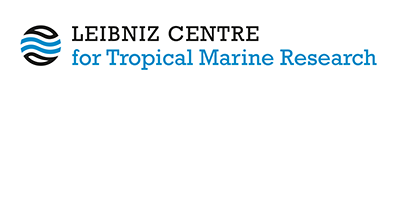Options for low-technology and/or Low-cost IMTA Systems.
Senff, Paula and Kunzmann, Andreas  ORCID: https://orcid.org/0000-0002-9500-4332
(2025)
Options for low-technology and/or Low-cost IMTA Systems.
In: Marine Ecology - An Ecosystemic View of Anthropogenic Impacts.
, ed. by
Molina, Juan M. and Blasina, Gabriela E..
Marine Science, 2
.
Taylor & Francis Group, LLC, Boca Raton, pp. 79-93.
ISBN 978-0-367-45660-3
ORCID: https://orcid.org/0000-0002-9500-4332
(2025)
Options for low-technology and/or Low-cost IMTA Systems.
In: Marine Ecology - An Ecosystemic View of Anthropogenic Impacts.
, ed. by
Molina, Juan M. and Blasina, Gabriela E..
Marine Science, 2
.
Taylor & Francis Group, LLC, Boca Raton, pp. 79-93.
ISBN 978-0-367-45660-3
|
Text
Senff.pdf - Published Version Restricted to Registered users only Download (1MB) |
Abstract
Marine organisms are key to food security and to combat malnutrition, especially in the developing tropics. With the increase in human population, its appetite for seafood also grows, while production from capture fisheries is at its limit. There are conflicting views on whether aquaculture can really fill this gap. For large scale industrial aquaculture, most authors agree that it will not be able to feed the world, much less in a sustainable way. With regard to small-scale, family or village-based systems, the future looks bright.
Faced with resource limitations and environmental regulations, aquaculture operations have to augment their output while decreasing the relative use of resources, coastal space and effluent output. Integrated aquaculture is seen as a strategy to meet demands for more efficient and sustainable aquaculture production. Especially, integrated multi-trophic aquaculture (IMTA) is often described as a solution, but proliferation of the industry has been slow, uneven and research is still lacking in regards to its application to tropical marine species.
This chapter presents case examples from Tanzania, based on IMTA experiments with edible tropical species at three different trophic levels. A proof-of-concept presents the viability of a low-technology recirculating aquaculture system (RAS) of milkfish Chanos chanos, integrating sea cucumber Holothuria scabra and halophyte Sesuvium portulacastrum as extractive species. The species showed good growth and the system maintained good water quality and low concentrations of dissolved inorganic nitrogen even without an additional biofilter.
Removal, uptake and assimilation of feed-derived nutrients through the cultivation of the extractive species were examined to determine strategies to optimize bioremediation. The high-value sea cucumber H. scabra was raised on solid waste from milkfish aquaculture. In order to improve bioremediation efficiency, animals were supplied with additional carbon based on cellulose or bagasse, demonstrating good assimilation of nutrients from aquaculture waste. Increasing the C/N ratio of the waste led to a higher biomass production and nutrient recovery and subsequent turnover into sea cucumber biomass and bagasse, an agricultural waste product, proved to be effective for carbon supplementation. Removal and uptake of dissolved inorganic nutrients from milkfish effluents by systems planted with S. portulacastrum showed that nitrogen recovery in edible plant biomass was significantly higher in hydroponic cultivation.
This chapter contributes to the knowledge needed to move towards sustainably intensifying multi-trophic aquaculture in tropical countries. The results hint at the intricate interplay between extractive species, their biotic environment and nutrient cycles and highlight the complexity, but also the opportunities of marine IMTA. Community-based production systems (e.g. Indonesia, Vietnam, Tanzania, Madagascar) should be multiplied so that a significant amount of seafood can be produced in a more environmentally and socially friendly manner along the long coastlines of tropical countries.
| Document Type: | Book chapter |
|---|---|
| Programme Area: | PA1 |
| Research affiliation: | Ecology > Experimental Aquaculture |
| Date Deposited: | 02 Jul 2025 08:13 |
| Last Modified: | 02 Jul 2025 08:13 |
| URI: | https://cris.leibniz-zmt.de/id/eprint/5652 |
Actions (login required)
 |
View Item |





 Tools
Tools Tools
Tools